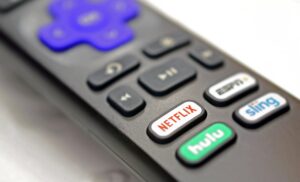By Peg Lopata, Contributing Writer

REGION – Choices, choices. Everything from toothpaste to smartphones―the choices are dizzying. Same goes for watching TV. If you want to keep it simple and don’t mind the expense, choosing to use cable or satellite service may make sense to you. There are also good reasons to “cut the cord” and eliminate your cable TV bill.
Getting started
For specific details on cancelling your cable service for something else, there are multiple websites (see two below) that’ll lead you through those details―there are too many to cover it all here. If you aren’t daunted by a bit of techno-speak, it should be fairly easy. If you don’t know a smartphone from a laptop, you may want to stay with cable services.
Or maybe you’re like Paula Kirk, a massage therapist from Westborough, who’d cancelled cable for a while and had a digital antenna for broadcast TV. “But then the antenna stopped working, so we subscribed to cable again.”
“I stay with it. Complete inertia!” admitted Joe Sternfeld, a retired actuary in Cambridge. “It works and I have enough money to pay for it.”
Probably the biggest advantage to cutting the cord is cutting costs. A cable bill can easily cost upwards of around $200 or more a month. That may not be a problem for some. Sternfeld’s bill is about $150 for internet and cable TV, but he feels there are not enough savings for him to cut the cord. However, choosing more specifically what you want can cost you less.
So, to begin with, assess what you’re getting. A thousand channels? Wow! But if you only watch five of them, why pay for the other 995 of them?
The necessities
If you want to cut the cord, it’ll help to have a smart TV—it’s like a TV with a built-in computer. These can be very, very expensive, or very cheap.
You’ll also need an internet connection. That service probably comes from your cable company, like Comcast. If you drop cable, you might need to shop around for a new internet provider.
Want to continue to watch network TV? You can do that for free with a digital antenna, mounted inside or outside. Depending on what works in your location, (see website below) you can get ABC, CBS, NBC, and so on.
Buying only the services you want
Cable services often include internet, TV and phone together. “Bundles” might save money, but not always. But it can be complicated to cut the cord. Some stick with cable for just that reason.
If you cut the cord you needn’t “bundle” anything. You can buy internet services from one company, and TV streaming services from others, such as Netflix, Hulu, or HBO. If you’re an Amazon Prime member, you can get a good number of movies and TV shows for free from that service. And lastly, if you still have a landline, you can buy a connection to that service from a third company.
“I enjoy the freedom of choosing my streaming services and know that if I want to, I can save money or spend more if I order multiple services,” said Diana Moon of Somerville, a former cable subscriber. “I also really disliked watching commercials. Sometimes there were more commercials than programming! The only time I miss having cable is not being able to watch the Academy Awards!”
(That problem can be solved by having a subscription to a streaming service that’ll air the Oscars or having an antenna.)
Have to watch sports? Some streaming services, such as Sling TV let you buy packages that including sports channels, such as ESPN and the Tennis Channel.
Cut the cord? Stay with cable? The choice is up to you.
To see if you can successfully use a digital antenna, check out this website:
Learn more about how to cut the cord:
https://www.pcmag.com/news/the-ultimate-cord-cutters-guide
https://stayingfrugal.com/how-to-cut-the-cable/
RELATED CONTENT:
NextGen TV rolling out in two Massachusetts markets (fiftyplusadvocate.com)












